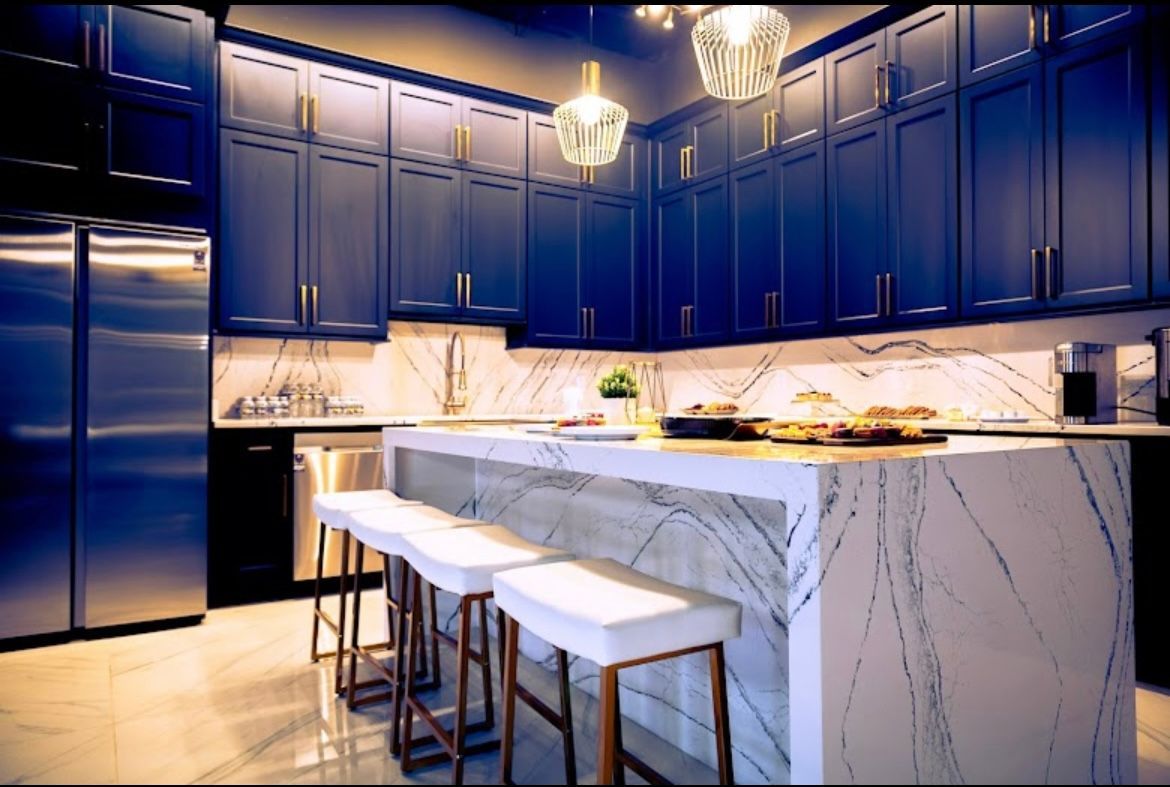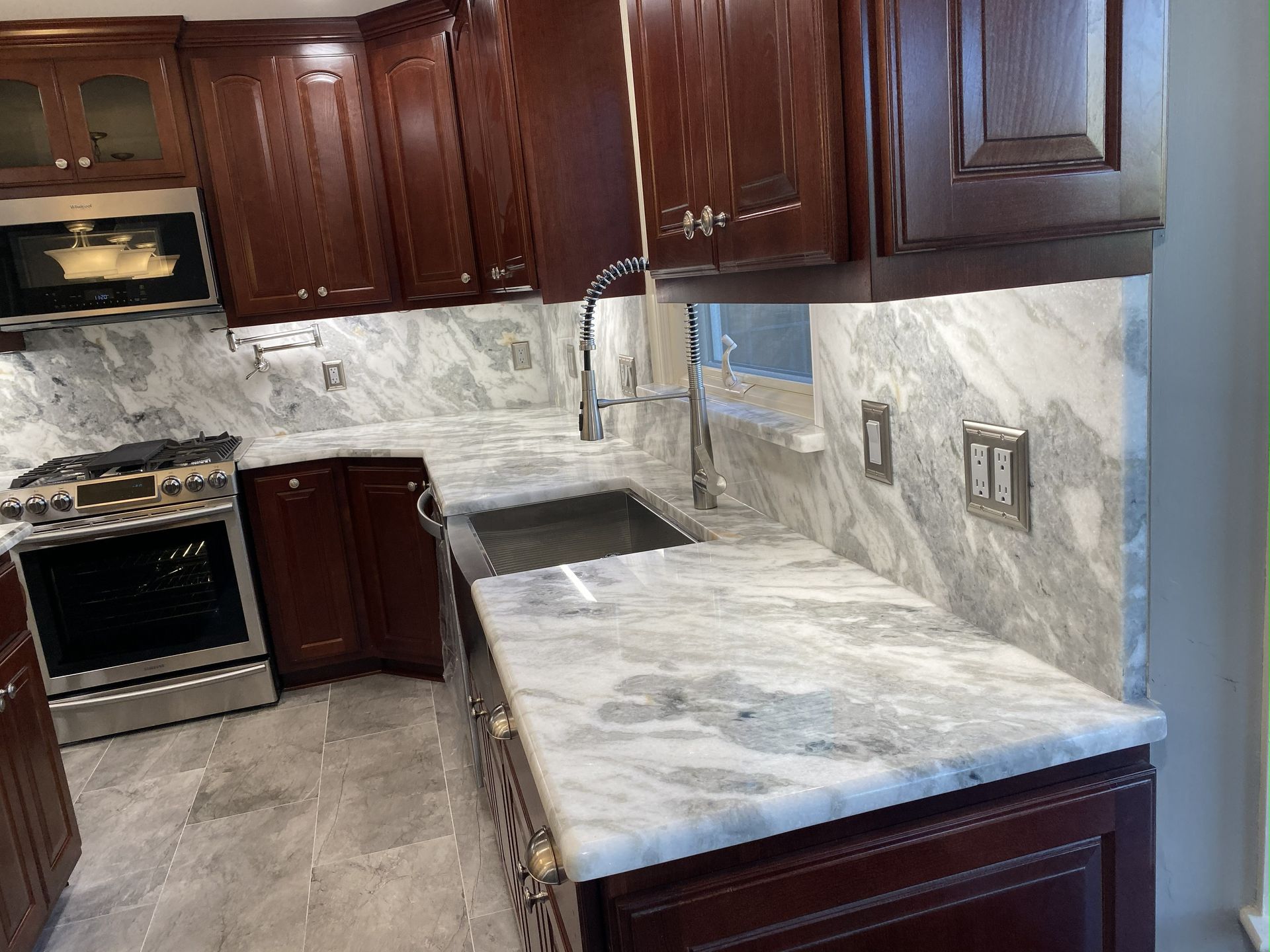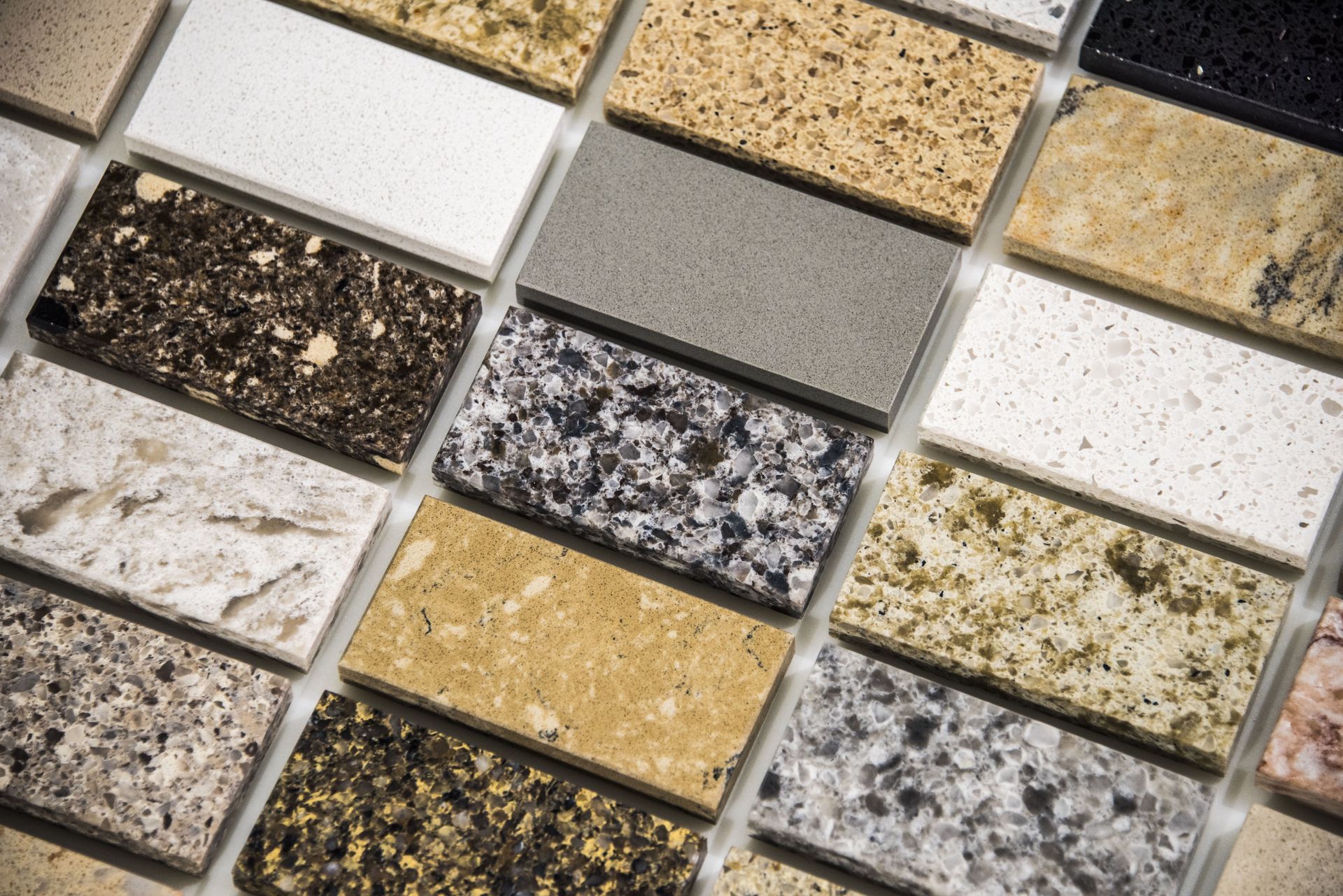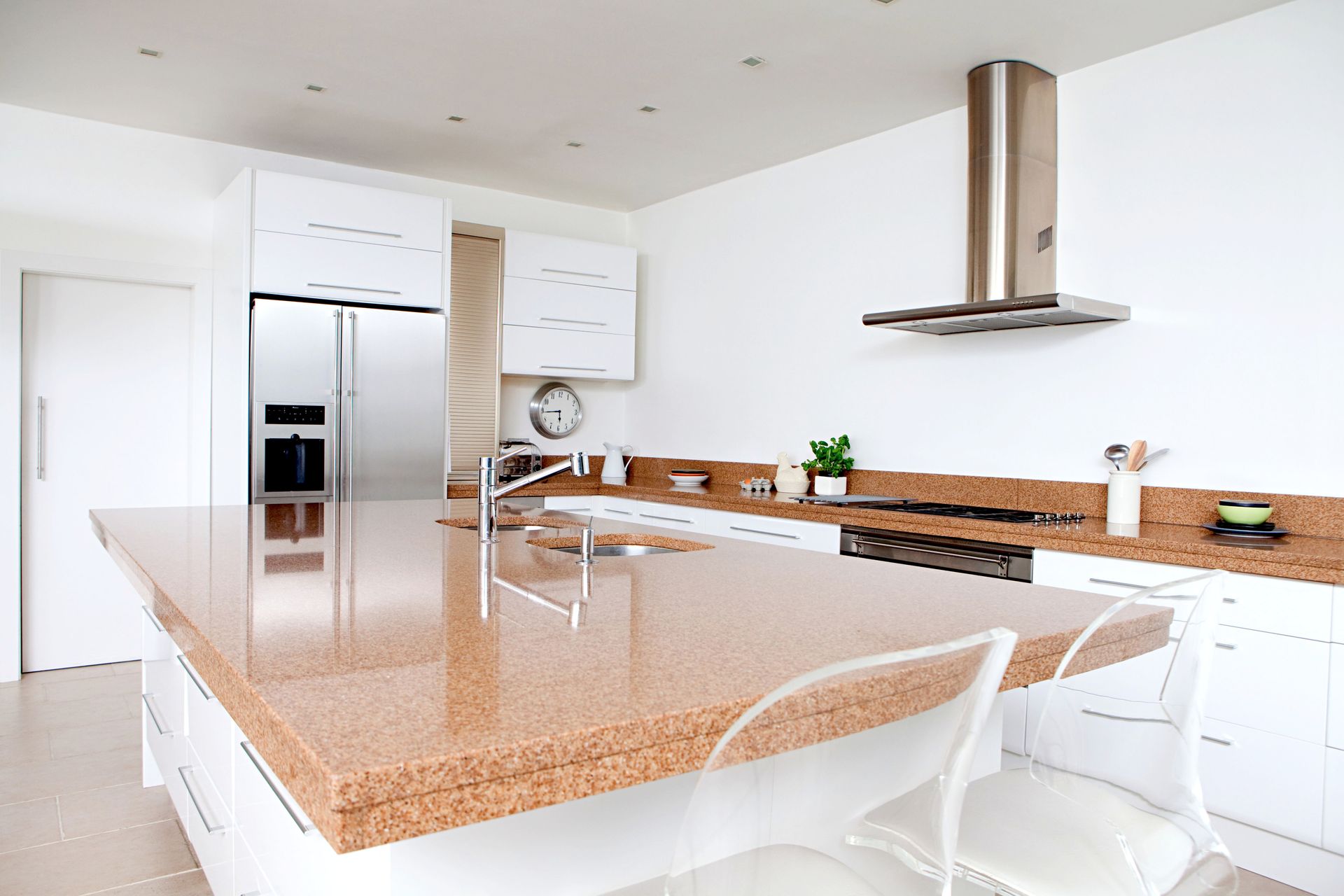Quartz Care and Maintenance
March 21, 2025
Quartz Countertops Care and Maintenance: How to Keep Your Surfaces Looking Their Best

Quartz countertops are one of the most popular choices for modern kitchens and bathrooms, and for good reason. Engineered from natural quartz crystals mixed with resins and pigments, they offer a durable, low-maintenance alternative to granite, marble, and other natural stone surfaces. With a non-porous surface, quartz is resistant to stains, bacteria, and scratching, making it an excellent choice for busy households.
However, while quartz countertops are more forgiving than many other materials, they still require some care to keep them looking their best. In this post, we’ll guide you through essential tips for quartz countertop maintenance and cleaning to ensure that your surfaces stay beautiful and functional for years to come.
1. Cleaning Your Quartz Countertops
One of the key benefits of quartz is that it’s non-porous, meaning liquids, stains, and bacteria won’t seep into the surface. This makes cleaning quick and easy.
How to clean quartz countertops:
- Daily Cleaning: Use a mild dish soap and warm water solution to wipe down the countertop with a soft cloth or sponge. A gentle microfiber cloth works best to avoid scratching the surface.
- Tougher Cleaning Jobs: For tougher stains or sticky residue, use a gentle all-purpose cleaner or a specially formulated quartz cleaner. Avoid cleaners that contain bleach, ammonia, or other harsh chemicals, as these can break down the resin and damage the countertop.
- Wipe Up Spills Promptly: While quartz is stain-resistant, it’s still a good idea to clean up spills as soon as they happen. Liquids such as coffee, wine, or juice can leave marks if left sitting for extended periods.
2. Avoiding Heat Damage
Unlike granite, quartz countertops are not as heat-resistant. Extreme temperatures can damage the surface, causing discoloration, cracks, or the resin to degrade.
Tips to avoid heat damage:
- Use Trivets and Hot Pads: Always place hot pans, pots, or baking sheets on trivets or hot pads instead of directly on the quartz surface.
- Avoid Direct Contact with High Heat: Don’t place hot cookware (e.g., a frying pan or roasting pan) on your quartz countertop straight from the stove or oven. Sudden temperature changes could cause the countertop to crack or discolor.
3. Preventing Scratches
Quartz is quite durable, but it’s still important to take care to prevent scratches that could diminish the appearance of your countertop.
How to prevent scratches:
- Use Cutting Boards: Always use a cutting board when chopping, slicing, or dicing. While quartz is harder than granite, it can still be scratched by sharp knives.
- Avoid Rough or Abrasive Tools: Do not use steel wool or abrasive pads on the surface, as they can cause scratches and damage the smooth finish of your countertop.
- Be Cautious with Heavy Objects: Heavy pots, pans, or other objects can leave marks if dropped on the quartz surface. Be mindful when handling items on the countertop.
4. Stain Removal on Quartz Countertops
Although quartz countertops are highly stain-resistant, certain substances—such as coffee, red wine, or food with high pigment content—can leave a mark if not cleaned quickly.
How to remove stains:
- Soap and Water: For most stains, cleaning with warm water and mild dish soap is usually sufficient.
- Use a Non-abrasive Cleaner: For more stubborn stains, a non-abrasive cleaner or a mild degreaser can help break down the stain.
- For Dried-on or Sticky Substances: Use a plastic scraper to gently lift off any dried food or sticky residue. Be sure not to use metal scrapers, as they may scratch the surface.
- Baking Soda Paste: For deeper stains, you can create a paste using baking soda and water. Apply the paste to the stain, let it sit for 10-15 minutes, and then wipe it away with a damp cloth.
5. Polishing Quartz Countertops
Unlike granite or marble, quartz doesn’t require regular polishing or sealing, as it naturally has a glossy finish. However, if you’d like to enhance the shine or restore some luster, a quartz-specific polish can be used.
How to polish quartz:
- Use a Quartz-Specific Polish: When you want to restore the shine, use a non-abrasive quartz polish that’s specifically designed for engineered stone surfaces.
- Buff Gently: Apply the polish with a soft microfiber cloth in small sections, buffing in circular motions to bring out the surface’s natural luster.
6. Handling Chips and Cracks
While quartz is highly durable, it’s not completely indestructible. If a heavy object is dropped or a sharp impact occurs, chips or cracks may form.
What to do if you notice chips or cracks:
- Small Chips: For minor chips, a professional repair specialist may be able to use resin fillers to fix the damage and restore the surface’s appearance.
- Larger Cracks: For larger cracks or damages, it’s best to contact a professional who specializes in quartz countertop repairs or replacement. In some cases, the damaged section might need to be replaced entirely.
7. Avoiding Staining from Oils and Grease
While quartz is resistant to most types of stains, oils and grease can sometimes leave marks if left on the surface for an extended period. It’s best to wipe up oils, butter, or greasy foods promptly.
How to avoid staining from oils:
- Quick Clean-Up: Wipe away oils or greasy substances right after use. A simple cloth or paper towel will usually do the trick.
- Use a Coaster or Tray: For items that contain oils (like a bottle of olive oil or greasy takeout), consider using a coaster or tray to catch any accidental spills.
8. Regular Inspections
Finally, it’s always a good idea to inspect your quartz countertops regularly for any signs of damage. Although quartz is low-maintenance, checking for any visible cracks, chips, or stains can help catch issues early before they become more significant problems.
Conclusion
Quartz countertops are a beautiful, functional addition to any home, and with the right care, they can maintain their stunning appearance for years. By cleaning regularly, protecting against heat and scratches, and taking care of stains promptly, you can enjoy the beauty and practicality of your quartz surfaces without the need for excessive maintenance.
Remember, quartz is a durable and low-maintenance material, but a little effort will go a long way in keeping it looking its best. By following these simple care tips, your quartz countertops will continue to shine and add value to your home for many years to come.


Granite is one of the most popular choices for kitchen and bathroom countertops—and for good reason. It's durable, beautiful, and timeless. But like any natural stone, granite needs a little care to keep it looking its best. One of the most important steps in maintaining granite countertops is sealing them. In this post, we’ll walk you through the basics of sealing granite, why it’s so important (especially for countertops that get regular use), and how MGL Granite can help. Why Does Granite Need to Be Sealed? Granite is a natural stone with a porous surface. That means that if it's left unsealed, liquids like water, oil, wine, or juice can seep into the stone, causing stains or even long-term damage. Bacteria can also find their way into those tiny pores, which isn’t something you want on your food prep surfaces. Sealing your granite countertops helps create a protective barrier that: Repels moisture and spills Prevents staining Makes cleaning easier Extends the life and beauty of your countertops How Often Should You Seal Granite? It depends on the type of granite, how much use your countertops get, and the type of sealer used. Some granite varieties are denser and require sealing less often, while others are more porous and need more frequent attention. As a general rule: Seal high-use kitchen countertops once a year. For less frequently used areas (like guest bathrooms), every 2–3 years may be enough. Pro Tip: Not sure if it's time to reseal? Drip a few drops of water on the surface. If it beads up, you're good. If the water soaks in, it's time to reseal. How to Seal Granite Countertops: Step-by-Step 1. Clean the Surface Thoroughly: Wipe down your granite with a gentle stone cleaner or warm soapy water. Remove all residue and let it dry completely before sealing. 2. Choose the Right Sealer: Use a granite-specific penetrating (or impregnating) sealer that soaks into the stone to provide long-lasting protection. 3. Apply the Sealer: Follow the instructions on the label. Typically, you'll a pply the sealer evenly with a clean cloth or applicator pad. Let it absorb for about 15–20 minutes. Wipe off any excess with a clean, dry cloth 4. Let It Cure: Most sealers cure within 24 hours. During this time, avoid using the surface or getting it wet. Want a Professional to Handle It? We've Got You Covered! At MGL Granite, we don’t just install granite—we help you maintain it. We offer professional granite sealing services, so you don’t have to worry about the mess or guesswork. Whether you need sealing for a newly installed countertop or want to refresh an older surface, we’re here to help. Keep Your Granite Looking Great for Years Sealing your granite countertops is a simple step that goes a long way in protecting your investment. With regular maintenance—or a visit from our team—you can enjoy the beauty and durability of your countertops for decades to come. Contact us today to schedule your sealing service or ask about the best care plan for your countertops!




Share On: